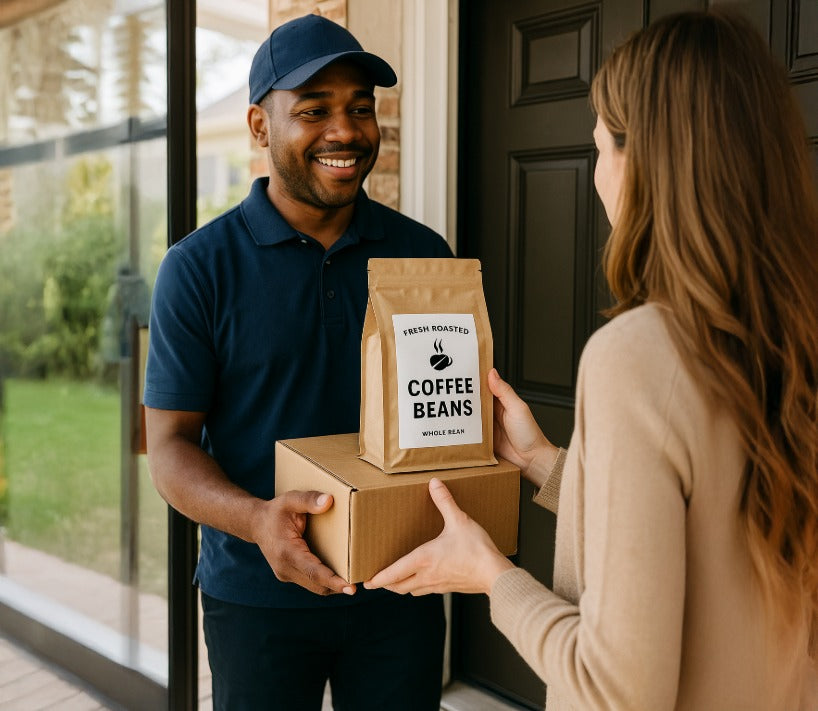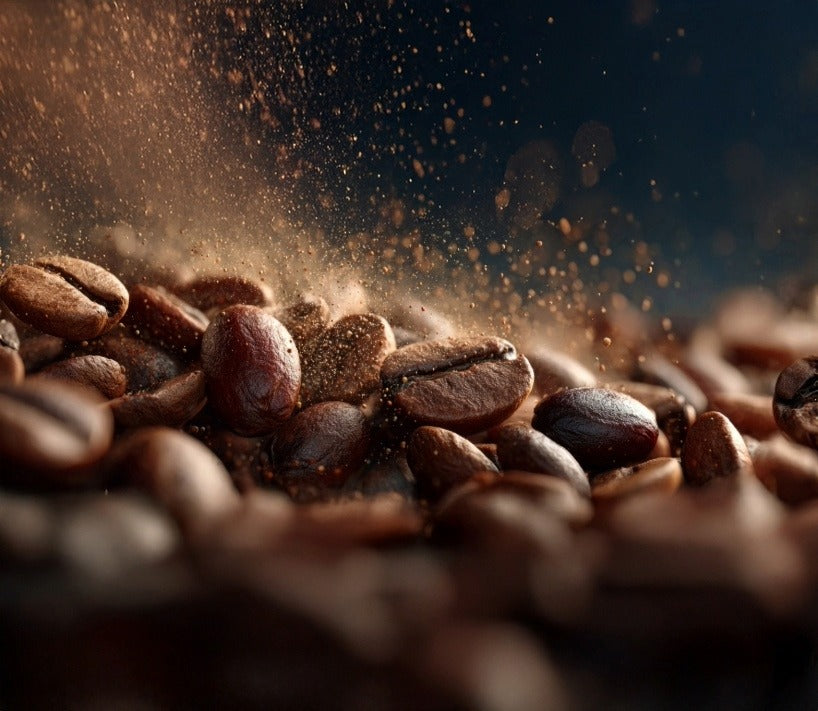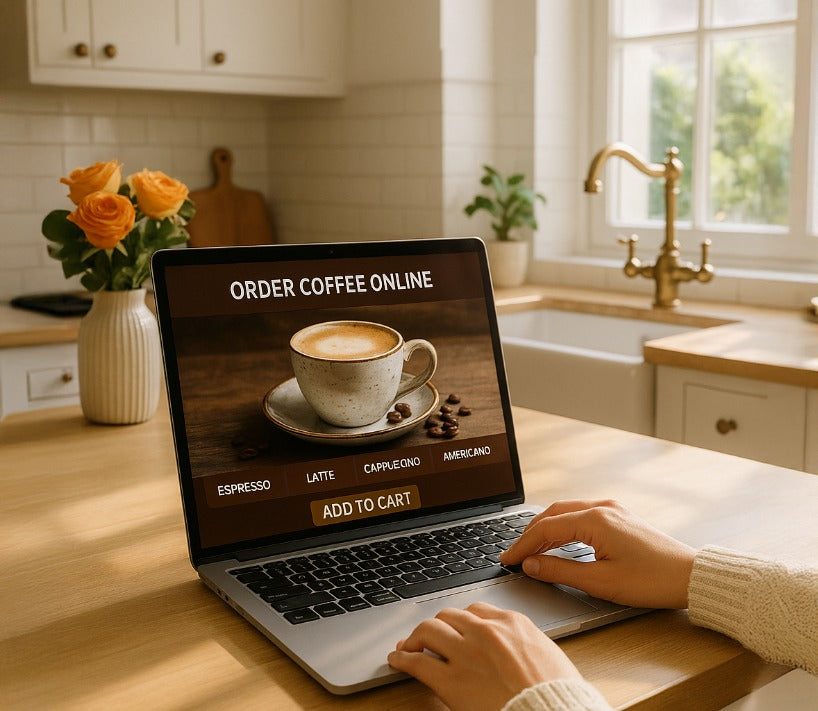Best Coffee To Buy Online Roast Profile Level Chaos: Why Your “Medium” Might Actually Be Burnt—or Barely Brown
May 23, 2025 5 min read
Best Coffee To Buy Online Roast Profile Level Chaos: Why Your “Medium” Might Actually Be Burnt—or Barely Brown
The Great Roast Mirage
I used to think I was pretty roast-savvy. Walk into Dunkin’, ask for a “bold medium,” stride out feeling like a café connoisseur. Then one day I tasted a proper medium roast from a small farm in Guatemala and my mouth yelled, “Wait—where’s the charcoal?” That’s when it hit me: my beloved midday pick-me-up tasted less like a comforting campfire and more like wet cardboard because it was never truly medium at all.
Meanwhile, Starbucks calls its Pike Place a “medium,” but anyone who’s ever left toast in the toaster too long knows that’s closer to French Roast territory. Why the bait-and-switch? Easy: the darker you roast, the more you hide those pesky imperfections in lower-grade beans—kind of like cranking up the autotune on a karaoke singer who can’t stay on key.
If you’ve ever wondered why your at-home brews bounce from watery to ashy, trust me: it’s not your fault. You’ve been living in the Roast Level Twilight Zone. Today, we’re breaking free.
Setting the Record Straight, One Crack at a Time
1. Roast Levels 101: Light, Medium, Dark—Hold the Marketing Gloss
Roast Level Temperature Range “First Crack” & “Second Crack” Flavor Hallmarks True Light 196–205 °C (385–401 °F) Ends just after first crack Bright acidity, floral or fruity notes, sugary sweetness True Medium 206–218 °C (402–424 °F) Between cracks, no oily sheen Balanced body, caramel, chocolate, mild fruit True Dark 219–230 °C (426–446 °F) Ends during/after second crack Smoky, bittersweet, lower acidity, possible oil on surface Quick nerd note: “Cracks” are audible pops when beans expand under heat—nature’s popcorn soundtrack. First crack = steam escaping, second crack = cell walls fracturing.
Big chains blur these lines on purpose. Dunkin’ stops roasting almost immediately after first crack, but markets it as “bold medium.” Result? An ultra-flat flavor—think unsalted crackers dipped in lukewarm tea. Starbucks often blasts past second crack, rebranding near-charcoal beans as “medium” to appear approachable, while still masking defects with roast char. Voilà: inconsistency disguised as house style.
2. Why Lighter Isn’t Weaker (and Darker Isn’t Stronger)
Contrary to the “darker = more caffeine” myth, caffeine barely changes through roast progression. Light roasts actually retain slightly more caffeine by mass. What does change is density: darker beans lose water, so they weigh less. Scoop-for-scoop, dark can land a stronger brew if you measure by volume instead of weight. Confusing? Absolutely. That’s why scales exist—just saying.
3. Flavor & Aroma by the Numbers
-
Light Roast: Ideal for tasting terroir. Those blueberries in an Ethiopian Yirgacheffe? That honeydew in a Costa Rican? Only present if you haven’t torched them out of existence. Great for the curious palate or anyone Googling “good coffee to drink black.”
-
Medium Roast: Caramelized sugars meet preserved origin notes. This is the sweet spot for balance—perfect for folks who want complexity without the palate-blitz of high acidity. If someone asks for the “best coffee for non coffee drinkers,” start here.
-
Dark Roast: Smoky, bittersweet, often oily. Dark can be delicious when executed with top-tier beans (think rich molasses or dark chocolate). But roast too far and you’re chewing on carbon. If you love traditional Italian espresso or researching the “best espresso beans,” a correctly handled dark roast still has its place.
4. How Big Brands Use Roast Darkness as a Cloak
High-quality green coffee costs more—sometimes way more—than commodity grades. Scorch those low-grade beans until nothing but smoke and “roastiness” remains, and voilà: imperfections gone, perceived flavor “strong.” That’s why a genuine small-batch medium roast—where no flaw can hide—often tastes worlds apart, even if both bags claim “100 % Arabica.”
Snack Break: Whether you’re hunting the best small batch coffee online, wondering “where can I buy fresh coffee beans near me,” or daydreaming about the best craft coffee at home, roast transparency matters more than fancy adjectives.
5. Spotting the Real Deal Roast Level
-
Look for a Roast Date, Not Just “Best By.” Freshness flags.
-
Check for Origin Transparency. Regions, farms, or co-ops signal pride.
-
Note Color & Oil. Dark roast? Slight sheen. Light roast? Dry, cinnamon-brown.
-
Read Flavor Notes. “Burnt shoe leather” = run. “Honeyed citrus, jasmine” = likely true light.
-
Ask the Roaster. Any specialty roaster worth their burr grinder will answer.
6. Taste Tests: Calibrate Your Palate
-
Control Brew: Use 1:16 brew ratio (e.g., 18 g coffee / 288 g water).
-
Compare Side-by-Side: Try a known light vs. your usual “medium.” Note brightness, body, sweetness.
-
Jot Observations: Use a quick wheel—fruity, floral, nutty, chocolate, smoky. Patterns emerge.
7. Roast Level & Brewing Method Synergy
| Brew Gear | Shines With | Why |
|---|---|---|
| Pour-Over (V60, Kalita) | Light–Medium | Highlights nuance, acidity |
| AeroPress | Light–Medium (or anything) | Pressure & immersion enhance sweetness |
| French Press | Medium–Dark | Retains oils, creates rich mouthfeel |
| Espresso Machine | Medium–Dark | Dissolves sugars & fats quickly for crema |
| Cold Brew | Medium–Light | Steeps out sweetness without harshness |
Pro tip: Grinding right before brewing is non-negotiable if you want that best tasting whole bean coffee experience.
8. Choosing the Right Roast for Your Taste Personality
| Personality | Roast Match | Keyword nudge |
|---|---|---|
| “Flavor Explorer” – Loves fruity sours, natural wines | True Light | buy specialty coffee online |
| “Balanced Sipper” – Swirls red wine, hates extremes | True Medium | best coffee online |
| “Chocolate Devotee” – Orders mochas, dark beer fan | Medium-Dark | best craft coffee at home |
| “Smoky Traditionalist” – Prefers dark chocolate & peat scotch | True Dark | top coffee delivered |
Liberate Your Cup (and Your Taste Buds)
By now, you can spot the roast impostors a mile away. The next time someone brags about their “smooth Dunkin’ medium,” feel free to (gently!) explain that it’s closer to a shy light roast. Likewise, when a friend touts their “balanced Starbucks medium,” you can reveal they’re basically sipping a French roast in disguise. Armed with real roast knowledge, you can:
-
Navigate the Coffee Aisle Confidently – No more roulette with mislabeled bags.
-
Dial-in Brewing Like a Pro – Match roast to method for peak flavor, whether you crave the best espresso beans or need a cold-brew kick for summer.
-
Choose Truly Fresh Beans – Remember: roast date + origin transparency = flavor fireworks.
-
Gift Better Coffee – When hunting “coffee beans as a gift” or that perfect gift for coffee lover friend, you’ll pick roast profiles tailored to their palate—making you look like a caffeine hero.
Coffee shouldn’t be an enigma wrapped in marketing spin. It should be a daily joy, bursting with flavors that honor the farmer’s hard labor and the roaster’s craft—not overshadowed by over-roasting. So go ahead, explore that spectrum from sunrise-bright light roasts to evening-campfire darks. And the next time the big chains try to spin roast confusion, you’ll be ready to politely—but confidently—call their bluff.
Happy brewing, fellow flavor adventurer! May your beans be fresh, your roasts transparent, and your cup forever free of marketing mirages.
Also in Best Coffee To Buy Online Education

Best Fresh Roasted Coffee Delivery Online
November 28, 2025 4 min read
I roast the best tasting coffee at home for you! I use 100% electric equipment, so no hydrocarbons here. Best fresh roasted coffee delivery starts with high-scoring specialty coffee online.

Which Roaster Makes Better Coffee: Gas or Electric?
November 27, 2025 4 min read
Why electric drum roasters produce cleaner, sweeter, more consistent coffee—especially the kind you want when buying fresh roasted coffee beans online or trying to make the best tasting craft coffee at home.

Biggest Coffee Buying Mistake at Home
November 26, 2025 4 min read
Learn why the roast date matters and how to buy fresh, high-quality specialty coffee online. No guesswork when you order coffee online with me. I only stock, roast, and process the best tasting craft coffee at home. I am YOUR personal roaster.
